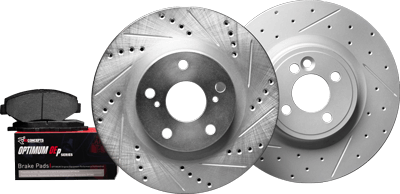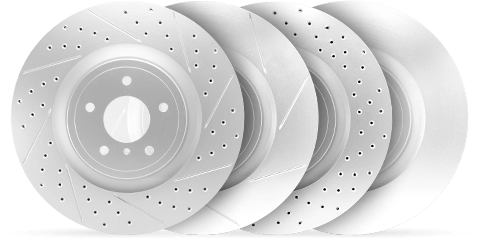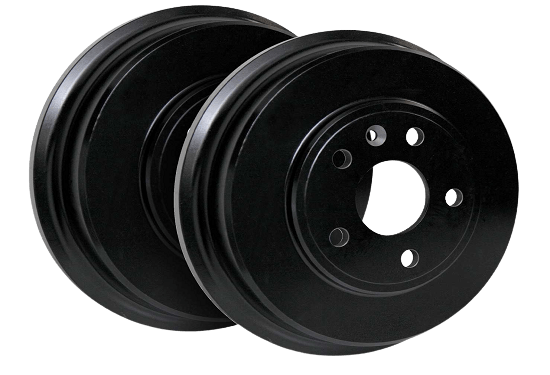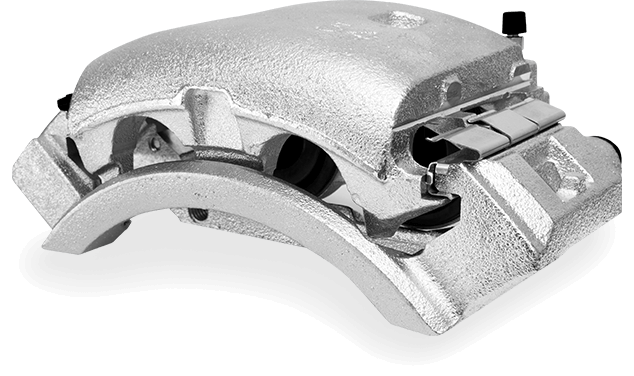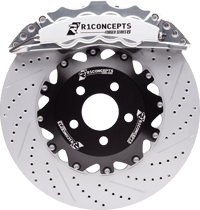Are you trying to prevent warped rotors and uphold your braking system’s integrity? Straight to the point: this article equips you with essential knowledge and approaches to keep your rotors flat and functional. From driving habits to regular inspections, you’ll learn how to effectively shield your brakes from warping and secure your peace of mind on the road.
Key Takeaways
- Understanding the causes of rotor warping, such as excessive heat and uneven cooling, is essential for prevention and maintaining vehicle safety.
- Selecting the appropriate brake pads and rotors, based on your vehicle’s specifications and driving conditions, can significantly reduce the risk of warping.
- Implementing good driving habits, including gentle braking and avoiding heavy loads, contributes to the longevity and effectiveness of your brake system.
- Regular brake maintenance, including inspections and proper installation, is crucial to detect early signs of wear and prevent costly repairs.
How To Prevent Warped Rotors?

Want to keep your car’s brakes working well and driving safe? Learn simple ways to take care of your brake rotors and avoid problems.
Practice Gentle Braking Habits
Gently applying the brakes rather than pressing hard can significantly reduce the heat generated during braking, which is a common cause of rotor warping. When you brake softly, the heat distributes more evenly across the rotor’s surface, preventing hot spots that can lead to warping. The benefit of this practice is not only the extended life of the rotors but also smoother braking experiences and less wear on the brake pads.
Ensure Proper Installation and Wheel Torque
Correctly installing your brake components and applying the right amount of torque to the wheel nuts are essential. If the torque is uneven or too much, it can cause the rotor to sit unevenly or create uneven pressure that can warp the rotor. By ensuring proper installation, you maintain the flatness of the rotor surface, which is crucial for effective braking and rotor longevity.
Choose the Right Brake Pads
Selecting brake pads that match your vehicle’s specifications and your driving style can prevent excessive heat buildup, which contributes to rotor warping. Some brake pads handle heat better and create less friction, which can be beneficial for the rotors. The specific benefit of using the right brake pads is that they complement the rotors’ performance and reduce the likelihood of warping, leading to a safer and more reliable braking system.
Regularly Inspect and Maintain Your Brakes
Having your brakes checked regularly can catch early signs of wear and prevent rotor warping before it becomes a problem. This includes checking the brake pads for wear, ensuring the brake fluid is at the correct level, and that the entire braking system is functioning as it should. Regular maintenance can provide significant benefits such as improved safety, better braking performance, and avoidance of costly repairs down the road.
Use Engine Braking When Possible
Engine braking, which involves downshifting to slow down the vehicle instead of using the brakes, can help in reducing the heat generated by the brakes. This technique is especially useful when driving downhill or coming to a gradual stop. The impact of using engine braking is less stress on the brake system and a reduced chance of rotor warping, leading to a more durable brake system.
Avoid Overloading Your Vehicle
Heavy loads increase the demand on your braking system, leading to higher temperatures and potential rotor warping. By avoiding carrying more weight than your vehicle is rated for, you minimize the strain on your brakes. This can have a significant impact on the overall health of your brake rotors, ensuring they remain straight and true, providing reliable stopping power.
In conclusion, maintaining your brake rotors is essential for safe and efficient driving. Regular inspections, proper driving habits, and the correct selection of brake pads are key to preventing rotor warping. Addressing signs of rotor issues promptly can save you from reduced braking performance and costly repairs.
What Exactly Causes Rotors To Warp?
There are numerous reasons as to why rotors warp, but we’ve listed the most common ones below.
By understanding these common causes, you can take proactive steps to minimize the risk and maintain your car’s braking system in top condition.
Excessive Heat Build-Up
One of the primary causes of rotor warping is the excessive heat that can build up during repeated heavy braking. When the brakes are applied, friction is created between the brake pads and rotors, generating heat. If the heat is not adequately dissipated, it can cause the metal of the rotors to expand unevenly, leading to warping. This is particularly common during aggressive driving or when descending long hills where the brakes are used continuously.
Uneven Cooling of Rotors
After intense use, if a rotor cools unevenly, it can warp. For instance, driving through a puddle of water with hot rotors can cause rapid cooling in certain areas while other sections remain hot. This thermal shock can result in the metal warping due to the different rates of contraction.
Improper Torque of Wheel Nuts
When the wheel nuts are not torqued evenly or are over-torqued, it can lead to uneven pressure on the rotor, causing it to deform. The rotor needs to be mounted flat against the wheel hub, and any unevenness can lead to vibrations and warping over time.
Material Defects and Wear
Manufacturing defects in the rotor, such as inclusions in the metal or improper machining, can lead to weak spots that are more prone to warping. Additionally, as rotors wear down over time, they can become thinner and less able to withstand the heat generated by braking, making them more susceptible to warping.
Corrosion and Rust Build-Up
Corrosion and rust can cause the rotor to become uneven. As the rust builds up, it can create high spots on the rotor surface. These high spots can cause uneven pressure between the brake pad and the rotor, leading to warping when the brakes are applied.
Prolonged Stress and Heat Cycles
Rotors go through numerous heat cycles, which is the process of heating up and cooling down as the brakes are used. Over time, this can cause the metal to become fatigued, making it more prone to warping. Prolonged stress from heavy braking exacerbates this issue, as the rotors do not have sufficient time to cool down properly between applications of the brakes.
Incorrect Installation
If rotors are not installed properly, they may not sit flush against the hub, leading to an uneven surface that is more likely to warp. This can be the result of not cleaning the hub surface properly before installation, or by not following the correct installation procedure.
Roles Of Rotor Types When It Comes To Rotor Warping

Does Rotor Material Contribute To Warping?
Yes, rotor material plays a significant role in the propensity for warping. Cast iron rotors, while popular for their heat absorption capabilities, are more prone to warping, especially if the cast iron quality is subpar.
High-carbon cast iron rotors tend to be more resistant to heat stress and warping due to their increased thermal stability and better heat dissipation. On the other hand, rotors with lower quality materials may warp more easily under extreme conditions due to the uneven expansion and contraction of the metal.
Which Rotor Design Is More Susceptible To Warping?
Blank or smooth rotors are generally more susceptible to warping compared to slotted or drilled designs due to their solid surface area retaining heat.
The design of the rotor can influence its susceptibility to warping. Blank or smooth rotors, which are commonly used as OEM parts for many vehicles, have a solid surface area that can retain heat, making them potentially more prone to warping if not properly cooled.
Slotted and drilled rotors, designed to dissipate heat more effectively, may be less likely to warp due to their increased surface area and improved air circulation. However, drilled rotors can be more susceptible to cracking under severe stress due to the drilled holes, which can compromise the rotor’s structural integrity.
Do Slotted or Drilled Rotors Prevent Warping?
Yes, slotted and drilled rotors can help prevent warping by allowing better heat dissipation. The slots and holes in these rotors provide more surface area for air to flow through, which helps cool the rotors more efficiently during intense braking.
This can reduce the likelihood of warping by minimizing the temperature extremes that rotors experience. While they are often associated with high-performance vehicles, slotted and drilled rotors can offer benefits for everyday driving by improving heat dissipation, potentially leading to longer rotor life and more consistent braking performance.
Do Brake Pads Influence Rotor Warping?
Yes, brake pads significantly influence rotor warping. The type and quality of brake pads determine how much heat is generated during braking and how it’s distributed across the rotor’s surface. High-quality brake pads that handle high temperatures well can reduce the likelihood of rotor warping by ensuring even heat distribution and preventing excessive temperatures that can lead to rotor deformation.
What Is The Best Brake Pads To Avoid Rotor Warping?

Using ceramic brake pads is a good choice to help prevent the rotors from warping.
Ceramic brake pads are a great choice to help prevent the rotors in your car’s brakes from warping. They last a long time and are very good at managing heat, which means they don’t get as hot when you use your brakes. This is good for the rotors and helps keep them from bending out of shape. Also, these pads create a type of dust that is less rough and doesn’t stick to the wheels, so your wheels stay cleaner.
These pads work well in different temperatures and driving situations, which is good for the rotors and helps them last longer. Since they don’t let the rotors get too hot or too cold too quickly, they help the rotors stay the right shape, making your brakes work smoothly and reliably.
What Are the Best Brake Pads for Towing Vehicles to Prevent Rotor Warping?
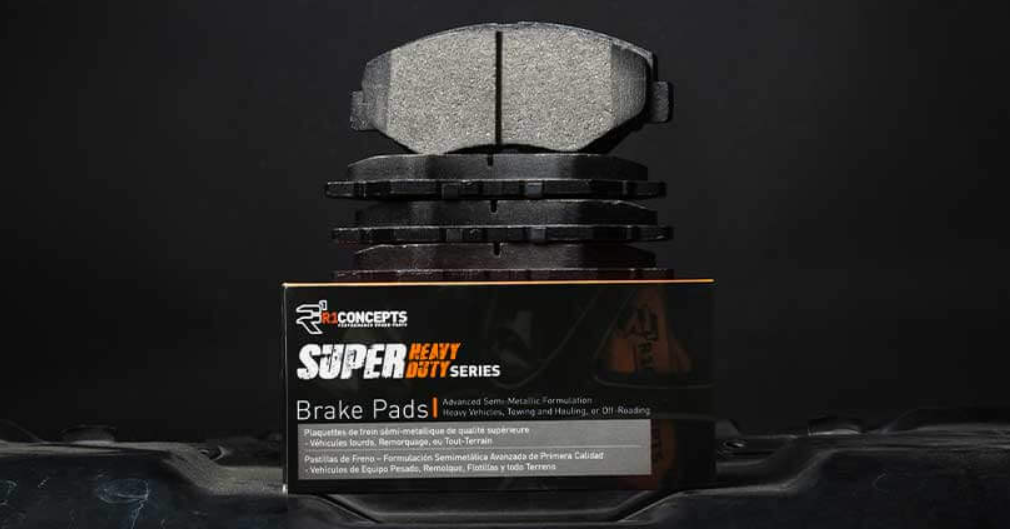
For towing vehicles, it’s best to use semi-metallic brake padsto prevent rotor warping. These pads are designed for high heat resistance and durability, which are essential when dealing with the extra strain of towing heavy loads.
The semi-metallic composition, which includes a blend of metal shavings and filler materials, allows for better heat conduction and dissipation. This means that as the brakes generate heat during towing, the semi-metallic pads can transfer the heat away from the rotors more efficiently than other types of pads, reducing the risk of the rotors overheating and warping.
Additionally, their durability makes them less likely to break down under the high pressure of towing, maintaining a consistent brake pad thickness and even pressure distribution on the rotor, which further helps in preventing warping.
Does Brake Pad Wear Cause Rotors To Warp?
Worn brake pads can indeed contribute to rotor warping. As brake pads wear down, they become less effective at dissipating heat, which can cause the rotors to overheat and warp. Furthermore, unevenly worn brake pads can lead to uneven heat distribution on the rotor surface, exacerbating the risk of warping. Therefore, maintaining brake pads and replacing them before they wear down too much is essential in preventing rotor warping.
Why Bedding In Your Brakes Help Prevent Rotor Warping?
The bedding-in of disc brakes is crucial for achieving peak braking performance, as it ensures an optimal level of friction between the rotor surface and brake pads. This procedure not only achieves consistent and reliable braking essential for safety across different driving situations, but also confers several advantages.
- It diminishes brake noise for a more serene driving experience.
- It lowers the possibility of experiencing vibrations or brake judder.
- It prolongs the service life of both rotors and brake pads.
- It bolsters overall efficiency and effectiveness in braking.
Adhering to the proper protocol during the bedding-in process can enhance both function and durability for your disc brakes.
This process is vital in generating a uniform coating of pad material on the rotor’s surface. Such even layering counteracts potential complications like vibration while promoting balanced wear patterns across your vehicle’s rotors—ultimately leading to smoother operation when engaging your brakes.
Driving Techniques to Minimize Rotor Warping

Exploring various driving strategies can aid in reducing the likelihood of rotor warping. We will delve into effective methods, ranging from maintaining a steady braking approach to avoiding excessive pressure on the rotor during braking, to mitigate warping risks.
Consistent Braking Pattern
Consistently applying the brakes in a gentle and steady manner aids in staving off rotor warping. Rotor warping can be exacerbated by repeatedly engaging in hard braking or navigating environments that necessitate continual brake use, such as congested traffic scenarios.
Drivers should steer clear of harsh and extended braking maneuvers along with constant application of pressure on the brake pedal, to curb the excessive production of heat which increases the risk of rotor warping.
Avoiding Heavy Pressure
Applying heavy pressure to the brake pedal, especially after hard stops, may lead to the warping of the rotor. To diminish this risk, drivers should employ a gentle braking method by progressively applying more pressure on the pedal instead of sudden and forceful actions.
In order to ensure even cooling and stave off rotor warping after executing a firm stop, it is important to avoid placing excessive stress on the brake pedal. Utilizing engine braking when descending inclines can aid in maintaining an even pattern of braking that helps prevent any warping of rotors.
Regular Brake Inspections and DIY Solutions
Consistent examinations of the brakes are crucial for identifying and preventing issues with rotor warping. To periodic checks, implementing do-it-yourself strategies such as correctly applying wheel torque can significantly aid in maintaining the integrity of your brake system and staving off instances of warped rotors.
We will delve into how often you should inspect your brakes, along with some practical DIY methods that can be executed right at home in your garage or driveway.
Frequency of Inspections
Manufacturers of vehicles suggest an annual brake check or one every 12,000 miles, depending on which occurs first. It’s recommended to inspect the brakes more frequently—every 6,000 to 8,000 miles—in conditions such as hilly terrain, heavy traffic or while towing. To specifically avoid rotor warping in the braking system of a vehicle, proactive drivers should opt for brake inspections at intervals between 5,000 and 7,000 miles.
DIY Solutions
Utilizing a brake lathe and dial indicator can be essential for identifying and rectifying issues with rotor warping yourself. You are able to check the extent of potential warp on the surface of brake rotors by employing a dial indicator, which facilitates an at-home evaluation of their status.
Through match mounting, you ascertain rotor runout while it’s both mounted on the hub and subjected to specific torque values. Then you make adjustments through rotation and reapplication of torque to achieve minimal runout—this aids in thwarting rotor warping. It is also critical during installation that all brake parts are installed correctly using a torque wrench since incorrect or unevenly applied torque may result in disproportionate pressure across the rotor surface leading to deformities.
The Cost of Ignoring Warped Rotors
Neglecting warped rotors heightens the danger of brake malfunction, which presents urgent threats to safety. The gradual decline in the condition of braking parts may result in a complete and disastrous failure of the brakes.
Examining deeper into what happens if we overlook warped rotors reveals outcomes from reduced efficiency in braking to facing expensive repair bills as potential consequences.
Reduced Braking Efficiency
The presence of warped rotors in a vehicle can lead to several issues, such as:
- Vibrations when the brakes are applied
- A decrease in the effectiveness of braking
- Lowered friction between the brake pads and rotors, extending the stopping distance needed for the vehicle
- A pulsating sensation in the brake pedal that can impair braking efficiency with varying degrees of seriousness.
Indications like strange sounds, a soft feeling when pressing on the brake pedal, or shaking during braking warrant an urgent check-up of your brakes. This inspection should also encompass verification that your brake lights are working correctly.
Compromised Safety
Warped rotors may cause damage.
- A vibration in the brake pedal that diminishes the driver’s command over the vehicle.
- Irregular contact with the brake pad, resulting in erratic behavior of the vehicle.
- Compromised control when braking at high speeds due to vibrations from rotor warping.
Ignoring warped rotors presents a significant safety hazard as it could prevent timely stopping to evade an accident. It is essential for safety that lug nuts are secured correctly and that one maintains their steering wheel properly.
Expensive Repairs
Neglecting warped rotors can lead to expensive repairs. While using a brake lathe for a DIY fix might seem cost-effective, it often equates to the price of new rotors, making it impractical for individual repairs. Replacing warped rotors is costly, but regular maintenance can prevent these expenses and ensure vehicle safety.
Summary
To keep it simple, taking care of your brake rotors is very important for safe driving. This guide has shown that knowing why rotors warp and choosing the right brake pads can help prevent damage. It’s best to brake gently, install everything correctly, and check your brakes often. If you ignore the problem, your brakes may not work well, which is dangerous and can cost a lot to fix. So, always look after your brakes to drive safely and avoid big repair bills.


